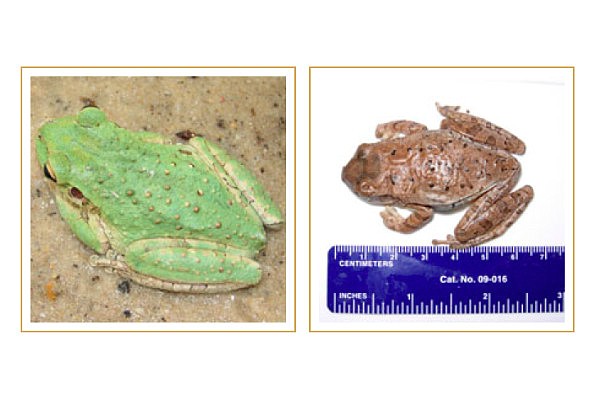- April 25, 2024
-
-
Loading

Loading

The little green critters hopping and ribbiting away in your backyard might not be as harmless as you think.
At least some of them, scientists say, are likely Cuban treefrogs, invasives that eat native lizards, snakes and at least five native species of frog, and tend to hang around structures where they “poop on walls and windows (leaving ugly stains), take over birdhouses” and “even find their way into homes, hanging out in toilets and clogging sink drains,” according to the University of Florida’s Department of Wildlife Ecology and Conservation website.
Ugh. What to do?
“We recommend that you euthanize them humanely,” the UF site says. Actually, if you catch one, releasing it back into the wild is illegal.
The UF website site lays out the basics of froggy euthanasia: First, identify the frog. If you’re not sure it’s a Cuban treefrog, email a photo of it to [email protected] (subject line: Treefrog identification) for confirmation before you harm it.
Once you’re sure you have a Cuban treefrog, get a pair of rubber gloves before handling it; Cuban treefrogs secrete a mucous that irritates peoples’ eyes and nose and can be dangerous for people with asthma.
Then get a spray or gel that contains at least 20% benzocaine, often found in first aid burn sprays.
Catch the frog, place it in a plastic bag, and spray or apply the benzocaine substance “liberally” on the frog’s back or belly. Avoid the frog’s eyes, because getting benzocaine in them may cause pain.
The frog will become comatose within a minute or so. Once that happens, place the bagged frog in the freezer for at least 24 hours. The benzocaine will keep it from feeling pain from the freezing, and the freezing will cause the frog, if not already dead, to “go into a hibernation-like state and never wake up” so that it won’t wake up later in the garbage, according to the UF site.
Then you can discard the frog.
Cuban treefrogs probably first arrived in Florida in the 1920s as stowaways in shipping crates from the Carribbean, according to a Cuban treefrog factsheet.
The University of Florida Wildlife-Johnson Lab is collecting information from citizen sightings of Cuban treefrogs. To learn how to participate in the reporting program and help scientists gather information on these frogs, visit ufwildlife.ifas.ufl.edu/citizen_sci.shtml.